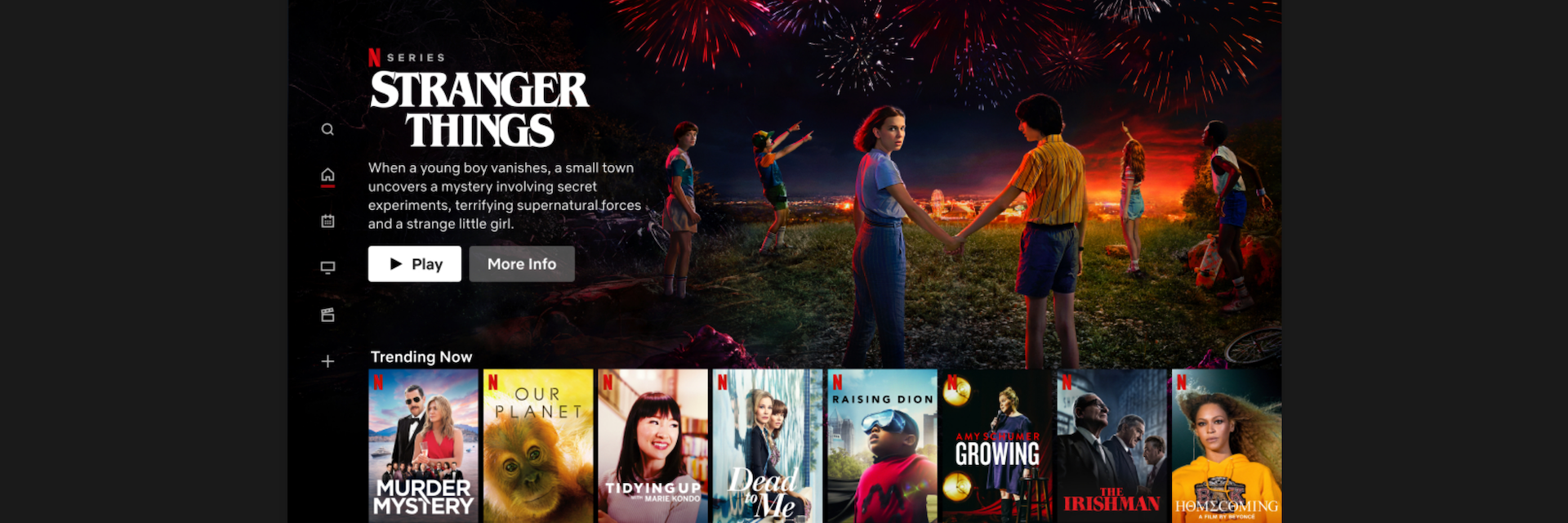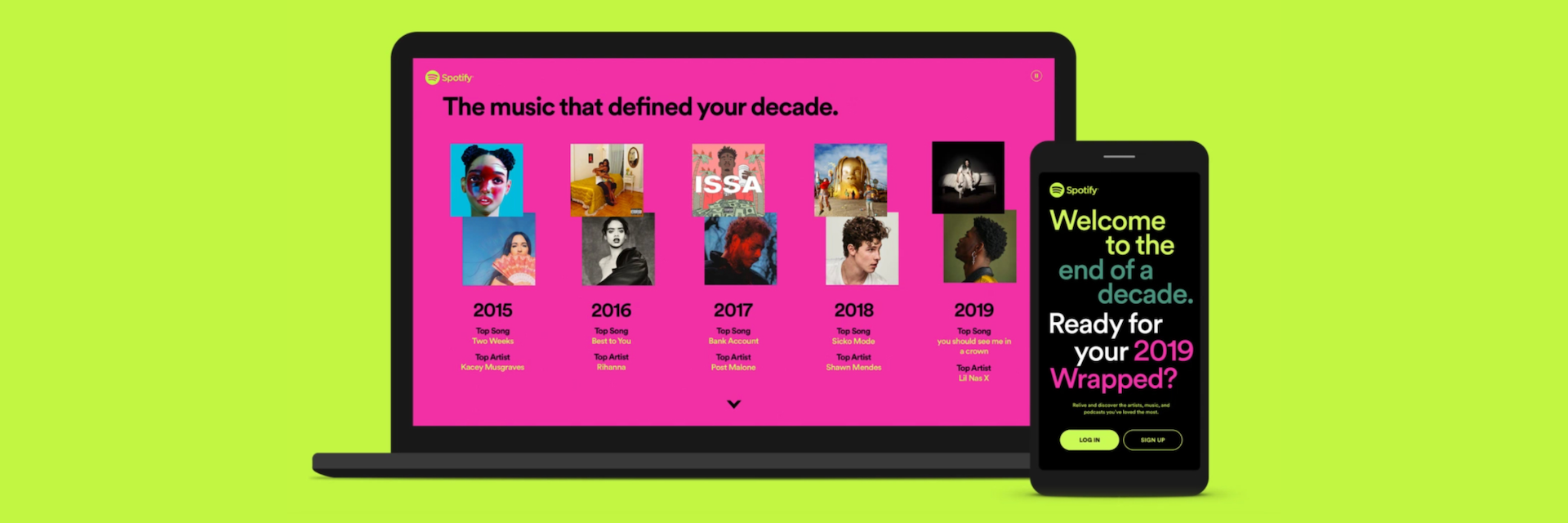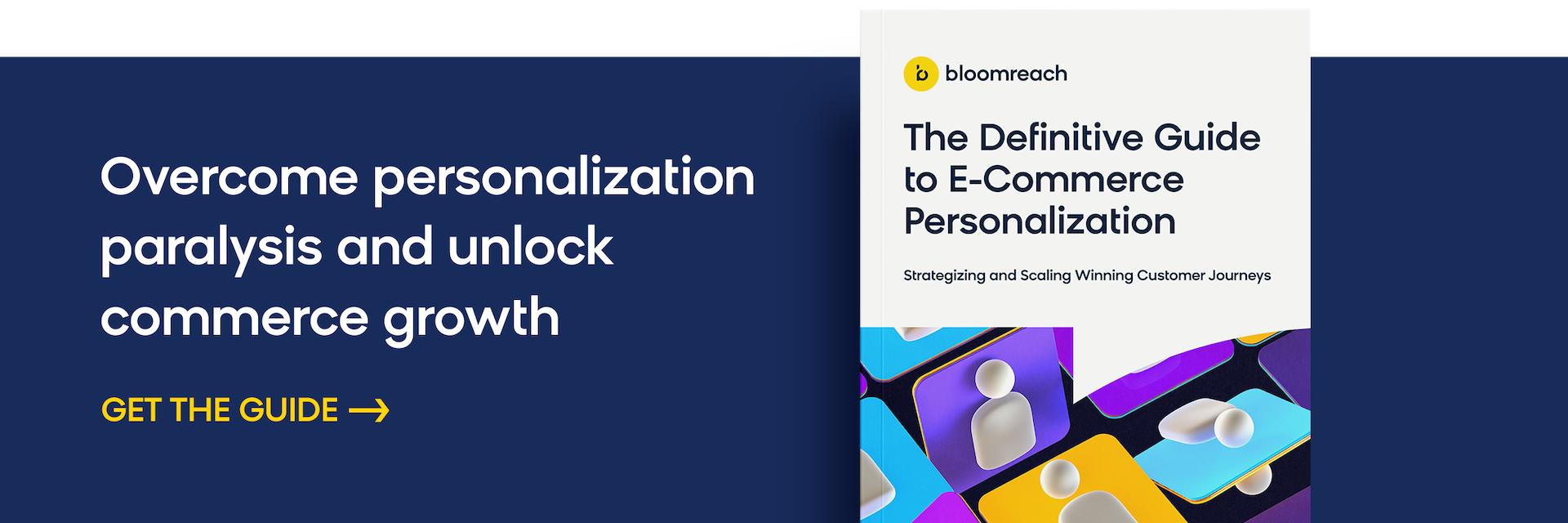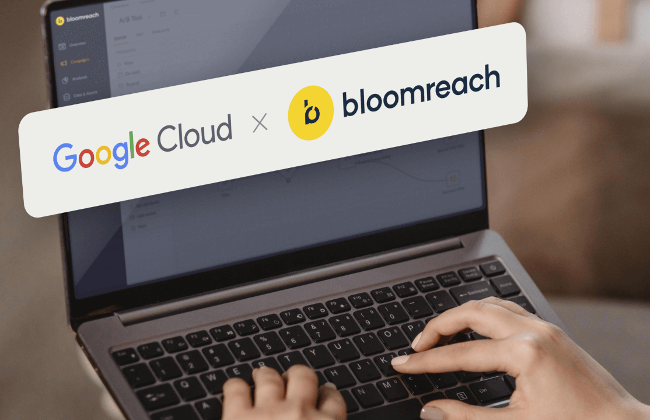3 CDP Personalization Tactics to Fuel Your Marketing
By Carl Bleich
08/11/2021
One of the best things about a customer data platform (CDP) is that it opens up a world of ecommerce personalization possibilities for marketers.
Using a CDP to segment customers according to their behavior and subsequently deliver a personalized, omnichannel experience is key to success in digital commerce.
In today's digital-first world, personalization is paramount. And a marketer with an effective CDP has the secret sauce.
At Bloomreach, we define personalization as the practice of using product and customer data responsibly to build experiences so relevant and consistent, they feel like magic. We bring in measurable results for commerce companies by creating experiences that span cross-channel, on-site, in-app, to drive customers through the journey from brand awareness and product discovery to repeat purchases.
Because a CDP can collect data, it becomes the perfect starting point for personalization. The massive amount of aggregated data can be organized into a single customer view that allows for near endless personalization possibilities.
But where should you start? What is “good personalization” these days? And how do you know when the personal customer data you are using to personalize communications is over the line, or “creepy”?
Let's take a look at examples from some of the best companies in the world at personalizing content for their customers while discussing how you can use your CDP to personalize in a similar manner. But before we get into the how, let's discuss the why.
Why Personalization?
Why, in today's digital world, is it so important to personalize your marketing communications?
The importance of personalization in B2C marketing cannot be overstated in today's digital world. Customers are becoming more demanding of brands by the day and personalization is one of the tools that brands can use to meet these demands and foster customer loyalty.
Marketers see an average increase of 20% in sales when using personalized experiences and 80% of shoppers are more likely to buy from a company that offers personalized experiences. Additionally, 44% of consumers are likely to shop with a company repeatedly after a personalized shopping experience.
Statistics show that engaging the right customers at the right moment with consistent and tailored communications across all of your channels leads to an increased number of conversions.
So just personalize your communications and the revenue will flow in, right? If it were only that easy.
There are so many elements of personalization that need to be considered in order to effectively reach your customers: how exactly to personalize, how to respect customer privacy while doing so, and what your company’s end goal with the personalized marketing communications is.
According to our State of Commerce Experience 2021 Report, 79% of buyers would change suppliers/retailers if they had a poor experience with the brand. With the rise in consumer expectations in today’s market, poor experiences can be synonymous with “unpersonalized experiences”.
On the other hand, Gartner states that 80% of marketers will abandon personalization by 2025 due to lack of ROI and challenges with customer data management. There seems to be a huge opportunity for companies that can effectively personalize but few seem to be currently doing so.
One path to avoid failure among Gartner’s 80% is having an effective CDP and a solid plan to personalize content. Bloomreach Engagement has helped hundreds of companies achieve success with personalization.
Personalized Product Recommendations
Personalized product recommendations are an outstanding way to convert interested onlookers into customers. Shoppers that click on a personalized recommendation are over four times more likely to complete a purchase with your company. Let’s check out two companies doing personalized product recommendations extremely well.
Netflix
There may not be a company in the world doing personalization better in today’s digital-first world than Netflix. The content platform and production company makes every effort to help its users discover great content that they will enjoy.
Each member profile is personalized across multiple dimensions — suggested videos, the organization of videos, and even how the artwork is displayed on the page. This deep level of personalization combines multiple different algorithms that address each profile’s specific needs.
The goal is to have Netflix members spend less time searching for what they want and more time enjoying great content. Recommending which product fits based on profile history helps greatly in this regard.

Mall.CZ
You don’t have to be an international business juggernaut like Netflix to personalize product recommendations.
A leading general e-shop in the Czech Republic, Mall.CZ, launched a video campaign that sent 20,000 personalized videos to a specifically-targeted audience with the help of Bloomreach Engagement. Centered around Mall.TV’s series “Life is a Game”, the video campaign was enormously successful monetarily and in boosting brand awareness.
The video campaign used personal customer data to create the reality that each shopper was the protagonist in the television series. Users who were targeted by the video bought 701% more worth of products in the Mall.CZ shopping gallery compared to others who saw the same offer in a different (non-personalized) manner.
That is the definition of success with personalization.
Provide Additional Value With Personal Data
While the ecommerce customer experience is infinitely better today than it was even a handful of years ago, companies still struggle to use personal data to scale their offerings of personalized experiences. These two companies referenced below, however, do not have that struggle.
Spotify
If you are a Spotify subscriber, there’s a good chance that you eagerly await your “Spotify Wrapped” report that comes out late in the year.
The report is a combination of mini reports that detail users’ top songs, top artists, minutes listened, and top genres. It also dives into music tastes from years past to showcase how you as a music lover have changed over the years.
The value of Spotify Wrapped is twofold—many users see it as a holiday gift from Spotify at the end of the year and users (oftentimes proudly) repay Spotify by activating their social media accounts to show off that gift. The mini reports are so well-designed and intriguing that many users post them on their Instagram stories, Facebook accounts, or other social media platforms.
That results in a massive amount of free advertising for Spotify, which most certainly leads to more users and more advertisers for the platform.

Weird Fish
Bloomreach customer Weird Fish also knows a thing or two about providing additional value with personal data thanks to personalized content.
Weird Fish used Bloomreach Engagement to send personalized marketing campaigns to customers via email that featured personalized product recommendations in the hopes of pushing them back towards a sale.
The added bonus here? The marketing automation is set up to automatically recognize customers who fit the bill to receive these personalized communications. “The watchdog automatic price drop alert” use case identifies abandoned cart items that are now on sale and automatically notifies customers who have opted in to marketing communications via email that the product they once had in their cart is now on sale.
This drives seekers back to your website and gives them that final push to make their purchase all with very little effort required on your end. After initial implementation of the use case, Weird Fish’s conversion rate was 429% higher on price drop notification emails compared to other campaigns.
Respecting Customer Privacy
There are not many hotter buzzwords in ecommerce right now than “customer privacy” — and for good reason. The internet is becoming more privacy-centric by the day and it is essential that your business aligns with consumers’ standards for caring for personal data. A negative and positive example of this is below.
Target
Just to prove every giant corporation is not constantly winning with personalization, consider this situation with Target in 2012.
A teenage girl received coupons in the mail for baby-related items such as clothing and cribs, much to the dismay of her father, who intercepted the mail. Her father confronted a confused store manager, who investigated the situation, and called back a few days later to apologize to the angry man.
But it was actually the girl’s father who wound up apologizing to the store manager as he learned in those few days that his teenage daughter was indeed pregnant and due to give birth a few months later.
How did Target know? Based on the bundle of purchases the teenage girl made in-store, Target predicted with confidence that she was expecting.
Was Target correct? Yes. Did Target come off as “creepy” and/or knowing too much when it knew about the pregnancy sooner than the teenager’s father? Undoubtedly. This is the perfect example of why all of your company’s personalization efforts should start by respecting customers’ privacy and operating ethically.
baby-walz
Bloomreach Engagement customer baby-walz specializes in products for young children and nursing mothers.
Wanting to develop a better understanding of its customers, and wanting to avoid the mess Target found itself in, baby-walz identified expecting mothers as a key customer segment and set out on its mission of connecting with them in a more personalized and compliant way.
Using personal information collected through a double opt-in scenario, baby-walz could identify which pregnancy stage each customer was in and personalize emails to each of these segments to add value for expectant moms at every step of their journey. The average open rate for these emails was 53.8%, significantly higher than previously sent marketing messages.
Bloomreach Engagement Turns Customer Data Into Marketing Magic
If you read the aforementioned examples of personalization and need a CDP that can support that functionality, look no further.
Bloomreach Engagement allows marketers to unify all of their siloed customer data and deliver connected customer experiences with a single solution. It truly allows companies to go beyond a normal CDP by activating and orchestrating customer data in a multitude of ways.
Since digital commerce is showing no signs of slowing down, marketers need every advantage they can possibly get to retain their customers. Bloomreach Engagement allows users to personalize campaigns that drive revenue and customer lifetime value. Bloomreach Engagement will allow you to provide the best possible experience to your customers, increase brand loyalty, and increase customer lifetime value across key segments. Schedule a personalized demo today to learn more about how we can help turn customer data into marketing magic.
Found this useful? Subscribe to our newsletter or share it.





